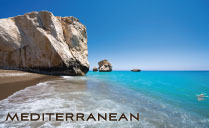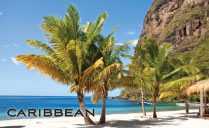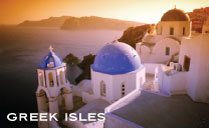Paradise Found by Captain John Borden
St. Lucia
13.53 N. Lat / 61.04 W. Lon
 When we were both in college, my brother William gave me the LP, Making Movies by Dire Straits. This album stirred our imagination; especially the track entitled “Tunnel of Love”, which tells of an English amusement park called The Spanish City. We were on the brink of starting our own lives, and the possibilities seemed endless. Once more we were kids set loose at the gates of the carnival, and it wasn’t long before we found ourselves in the heart of the Caribbean, along with our younger brother Stephen, William’s wife, Lisa, and of course my wife, Carole.
When we were both in college, my brother William gave me the LP, Making Movies by Dire Straits. This album stirred our imagination; especially the track entitled “Tunnel of Love”, which tells of an English amusement park called The Spanish City. We were on the brink of starting our own lives, and the possibilities seemed endless. Once more we were kids set loose at the gates of the carnival, and it wasn’t long before we found ourselves in the heart of the Caribbean, along with our younger brother Stephen, William’s wife, Lisa, and of course my wife, Carole.
 While we could have done far worse with our three years based in the Virgin Islands, with William and Stephen running their St. Croix construction company, and me and Carole chartering our sailboat Aquarius, it was not quite Camelot, or The Spanish City for that matter. I set my sights further south to what I was sure would be a natural wonderland of independent, strong, happy natives and breathtaking scenery, where twin mountains rise three thousand feet straight out of the Caribbean Sea. The island of St. Lucia, in particular, had stirred my imagination once again.
While we could have done far worse with our three years based in the Virgin Islands, with William and Stephen running their St. Croix construction company, and me and Carole chartering our sailboat Aquarius, it was not quite Camelot, or The Spanish City for that matter. I set my sights further south to what I was sure would be a natural wonderland of independent, strong, happy natives and breathtaking scenery, where twin mountains rise three thousand feet straight out of the Caribbean Sea. The island of St. Lucia, in particular, had stirred my imagination once again.
My parents and tarot-reading sister Ann came down from the states to wish Carole and me bon voyage. Before leaving, I implored my talented mother to paint a haunting picture of Aquarius, accompanied by two dolphins and a sperm whale, sailing by St. Lucia’s Piton Mountains at sunrise. She insisted, however, that I paint it myself, which I reluctantly did. Strangely, it was my sister and her cards who foretold of a somewhat different St. Lucia than I had envisioned.
 The evening before we set sail, I sat on William’s beach and stared south-southeast at a point somewhere between the ocean and the moonlit sky. Like many young boys of my generation, I once dreamt of being an Apollo astronaut, effortlessly bounding across the craters of the moon. In college, influenced as much by my astronomy professor, Sheridan Simon, as the rock band, Dire Straits, I had enlarged 8×10 glossies of the moon, taken through a telescopic lens. I wondered if I would ever have a chance to get a better look. For the following three days as we sailed south we were reliant upon our craft, not unlike the crew of Apollo 13 navigating back to terra firma aboard quite a different Aquarius. Our journey was obviously far less tedious, yet almost as inspiring. For instance, I can recall being alone on a midnight watch under a rising full moon when a magnificent school of dolphin danced before me, silhouetted by the aforementioned glowing sphere. They were bathed in shimmering light, and I was utterly spellbound as they swam about, seemingly conscious of the effect they were having on me.
The evening before we set sail, I sat on William’s beach and stared south-southeast at a point somewhere between the ocean and the moonlit sky. Like many young boys of my generation, I once dreamt of being an Apollo astronaut, effortlessly bounding across the craters of the moon. In college, influenced as much by my astronomy professor, Sheridan Simon, as the rock band, Dire Straits, I had enlarged 8×10 glossies of the moon, taken through a telescopic lens. I wondered if I would ever have a chance to get a better look. For the following three days as we sailed south we were reliant upon our craft, not unlike the crew of Apollo 13 navigating back to terra firma aboard quite a different Aquarius. Our journey was obviously far less tedious, yet almost as inspiring. For instance, I can recall being alone on a midnight watch under a rising full moon when a magnificent school of dolphin danced before me, silhouetted by the aforementioned glowing sphere. They were bathed in shimmering light, and I was utterly spellbound as they swam about, seemingly conscious of the effect they were having on me.
When I found my vessel in the summer of ’87, I had absolutely no intention of changing her name. Born to us at the dawn of harmonic convergence, she has been a window through which Carole and I have witnessed the best part of our lives. Aquarius’ approach to the south end of St. Lucia afforded us what was undoubtedly the highlight to that point. Escorted once again by a school of dolphin, we absorbed the awe-inspiring Pitons for hours before heading farther up the east coast to Marigot Bay.
 One could easily sail less than a mile off Marigot and never see the entrance. Obscured by a palm-covered peninsula, the clever and illusive Lord Admiral Nelson once hid his entire fleet from the pursuing French by ducking into the bay and tying fronds in the rigging. More recently, Walt Disney himself chose Marigot Bay as a site for his feature film, Dr. Doolittle, where islanders adopt “civilized” English names and manners while preserving superstitious customs. Old Walt definitely started something, for this has become the paradox of St. Lucia. Since declaring their independence from the English, the local government has invited all manner of resort development throughout the island. Investors and developers are still attempting to tame the wild innocence of the island and its people. They have created what reggae artist Lucky Dube refers to as a “Mickey Mouse freedom”, where a man-made utopia tries to replace one already provided by God. This manmade utopia, of course, comes with a price.
One could easily sail less than a mile off Marigot and never see the entrance. Obscured by a palm-covered peninsula, the clever and illusive Lord Admiral Nelson once hid his entire fleet from the pursuing French by ducking into the bay and tying fronds in the rigging. More recently, Walt Disney himself chose Marigot Bay as a site for his feature film, Dr. Doolittle, where islanders adopt “civilized” English names and manners while preserving superstitious customs. Old Walt definitely started something, for this has become the paradox of St. Lucia. Since declaring their independence from the English, the local government has invited all manner of resort development throughout the island. Investors and developers are still attempting to tame the wild innocence of the island and its people. They have created what reggae artist Lucky Dube refers to as a “Mickey Mouse freedom”, where a man-made utopia tries to replace one already provided by God. This manmade utopia, of course, comes with a price.
With all her development, Marigot’s beauty isn’t in Doolittle’s quaint waterfront café or the elaborate Mooring’s facility, but rather in the surrounding mountainsides and tranquil waters. As one drops anchor, local boys paddle out to sell anything from baskets to fruits and vegetables and will soon move on with a smile regardless of whether anything is bought. While on charter we would usually buy a stalk of bananas to hang from the bimini, picking the fruit as it ripened throughout the week. At times we would find bands of younger children asking for a dinghy ride from the customs office dock to the sandy beach peninsula, only a stone’s throw away. Accommodating their cheeky request was a mistake I would make only once, for no sooner had I boarded two or three of the laughing urchins than there were half a dozen more, crawling all over me, tipping the boat and trying to influence my course. When I arrived at the other side, they immediately requested a return trip. This little prank was a kind of initiation repeated on almost every first-time visitor to Marigot Bay.
Most visiting yachtsmen find refuge at the northeast end of the island at Rodney Bay, which is much flatter and more arid and boasts a brand new marina inside the inner manmade lagoon. In Rodney’s outer bay there are quite a few hotels, resorts, restaurants and three charter yacht facilities which sprang up in recent years, all catering to passing tourists and yachtsmen.
Between Rodney and Marigot lies the growing capital of Castries, where more and more street vendors are losing space to the newer shops, cafes and boutiques. In the market, however, there is still a wide variety of local fruits and vegetables, from mangoes to christophines and sweet avocados the size of melons.
At the southeast village of Soufriere the scenic brilliance of St. Lucia’s unparalleled beauty is best revealed from an anchorage off the old Hummingbird Hotel. Tying up stern to a palm tree, one can see the twin peaks of the Pitons rising up directly across Soufriere Bay. This is an awesome spectacle, especially first thing in the morning when a sailor pokes his head out of the hatch and seems to come face to face with God. Perhaps even more awe inspiring is this scene on a calm night, framed with starlight from above and a mirror image reflected in the bay below. I often wonder how enterprising locals and developers could break free from the magic of Soufriere and use its power simply to turn a buck. Nestled between the Pitons now sits a “Disneyesque” resort, where live elephants have been imported simply to amuse wealthy guests in their air-conditioned rooms. Even the hot springs at gorgeous Diamond Falls are guarded by self-important government toll collectors.
At sunrise on the morning of Aquarius’ final sail south along the Pitons of St. Lucia, I remember feeling rather disillusioned. Carole and I were accompanied by our friends, Susan and David Hickerson, who were, of course, dazzled by the twin mountains.
“What’s that?” asked David, whose attention was drawn to the other side of the boat.
“Oh, just a couple of dolphins,” I replied. “We see them all the time.”
“No, that,” insisted David, as a puff of spray shot up just beyond our two playful companions. My heart leapt and as we came up alongside the enormous black beast, there was no mistaking it. Up from the deepest depths of this treacherous profit driven world had come my hypothesis in the form of a sperm whale.
Man will never fully determine a nature he so grapples to make his own. Somewhere in a stateside freezer, Walt Disney sleeps, hoping one day to be revived by the progress of futuristic man but, in the meantime, as Lord Byron put it, “Roll on deep and dark blue ocean….”
Dedicated to the memory of Sheridan Simon, who knew the universe comes to us from within.





